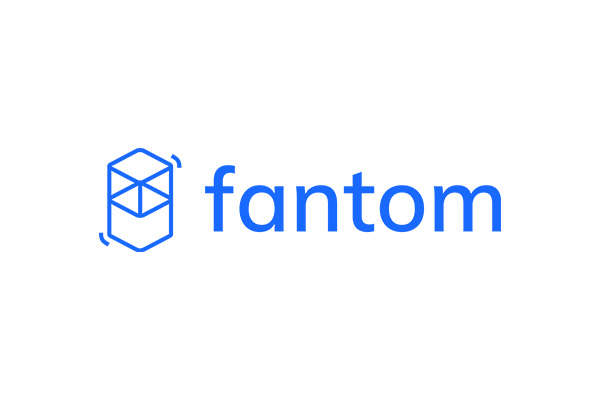Fantom
What Is Fantom (FTM)?
Fantom is a directed acyclic graph (DAG) smart contract platform providing decentralized finance (DeFi) services to developers using its own bespoke consensus algorithm.
Together with its in-house token FTM, Fantom aims to solve problems associated with smart-contract platforms, specifically transaction speed, which developers say they have reduced to under two seconds.
The Fantom Foundation, which oversees the Fantom product offering, was originally created in 2018, with the launch of OPERA, Fantom’s mainnet, coming in December 2019.
Fantom is an open-source decentralized smart contract platform for DApps and digital assets that was created as an alternative to Ethereum. Fantom has the goal of overcoming the limitations of previous generation blockchains and balancing three components: scalability, security and decentralization. The project offers a set of tools to simplify the process of integrating existing DApps, as well as a detailed staking reward system and built-in DeFi instruments.
Fantom is a Layer-1 blockchain that uses a scratch-built consensus mechanism and independent consensus layer, Lachesis, to facilitate DeFi and related services on the basis of smart contracts. Lachesis provides security for other layers as well, including Opera, Fantom’s EVM-compatible smart contract chain. The long-playing mission of the project is to “grant compatibility between all transaction bodies around the world.”
One of Fantom’s key strengths is its performance and efficient transaction processing, namely thousands of transactions per second, where transactions are settled in 1-2 seconds, and the cost is fractions of a cent per transaction. As a result, Fantom provides higher scalability but at a lower cost.
The ecosystem is based on two main technologies: Lachesis protocol and Opera.
The Lachesis protocol is the core consensus layer that secures the Fantom network by providing both transaction speed and security.
Lachesis is an aBFT consensus engine that uses a directed acyclic graph (DAG) algorithm. How it works: network data can be processed at different times, and the network filters the participants, allowing only one third, which are allocated due to erroneous or malicious behavior, without compromising network processes.
Fantom’s Asynchronous Byzantine Fault Tolerant (aBFT) Proof-of-Stake (PoS) consensus mechanism maintains the efficiency of the entire network, its design provides security at maximum speed. Fantom developers emphasize that the PoS mechanism is a leaderless phenomenon — there are no leaders of blocks and participants, and anyone can join (or leave) the network of nodes at a convenient moment.
The key qualities of Lachesis are: asynchronous, leaderless, Byzantine fault-tolerant, and near-instant finality.
As for Opera, it’s an application development layer or Fantom’s mainnet deployment platform, permissionless and open-source hosting DApps. Thanks to EVM integration and support for the Solidity programming language, Fantom has a full set of smart contract capabilities, which allows users to seamlessly interact with Ethereum platforms while maintaining the advantage of Fantom’s transaction efficiency.
The Fantom Foundation concluded that removing block leaders improves network security, so Opera uses a PoS model and leaderless validators (validators do not determine which blocks are valid).
In addition to being a fast, secure and cheap payment platform that enables to make fast and secure payments at minimal cost, Fantom also features on-chain governance where users vote with FTM tokens (one token equals one vote). Of the features: users have the right to express the degree of agreement / disagreement on a scale from 0 to 4.
FTM is the native utility in-house PoS token of Fantom that powers the ecosystem and is applied for payments, network fees, staking, and governance. FTM forms the backbone of transactions, and allows fee collection and staking activities, along with the user rewards the latter represents.
Who Are the Founders of Fantom?
The Fantom Foundation was founded by South Korean computer scientist Dr. Ahn Byung Ik. Currently, the platform’s CEO is Michael Kong.
The team behind Fantom has extensive experience primarily in the field of full-stack blockchain development, and aimed to create a smart contract platform which privileges scalability, decentralization and security.
According to its official website, Fantom’s team also consists of specialist engineers, scientists, researchers, designers and entrepreneurs. Employees are located throughout the world, matching the ethos of a distributed platform.
What Makes Fantom Unique?
Fantom attempts to use a new scratch-built consensus mechanism to facilitate DeFi and related services on the basis of smart contracts.
The mechanism, Lachesis, promises much higher capacity and two-second transaction finalization, along with improvements to security over traditional proof-of-stake (PoS) algorithm-based platforms.
Matching Ethereum, the project appeals to developers looking to deploy decentralized solutions. According to its official literature, its mission is to “grant compatibility between all transaction bodies around the world.”
Its in-house PoS token, FTM, forms the backbone of transactions, and allows fee collection and staking activities, along with the user rewards the latter represents.
Through token sales in 2018, Fantom raised almost $40 million to fund development.

